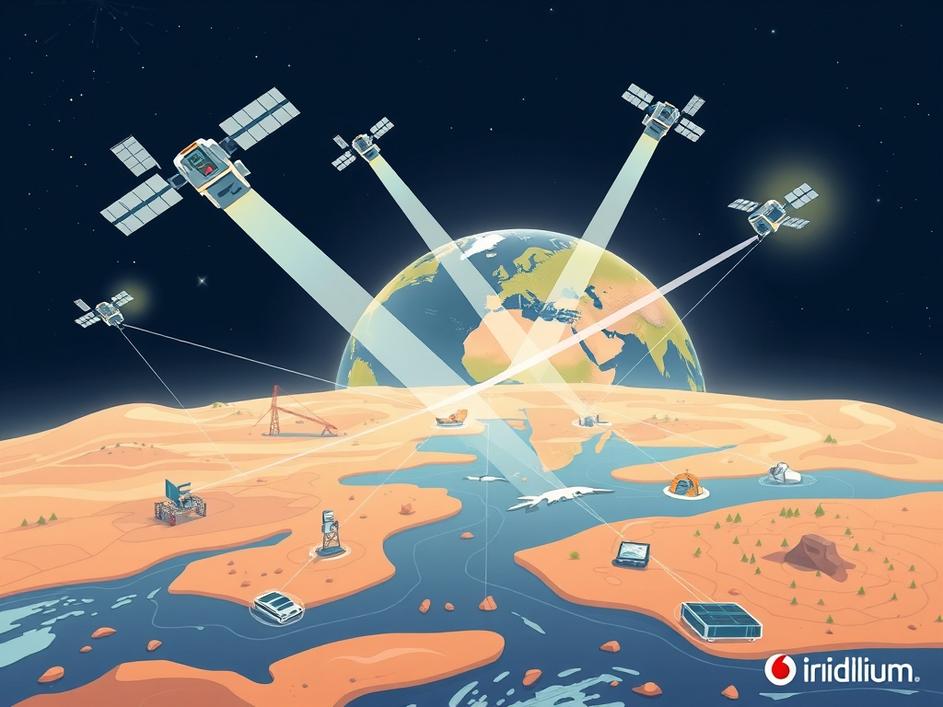


We are a digital agency helping businesses develop immersive, engaging, and user-focused web, app, and software solutions.
2310 Mira Vista Ave
Montrose, CA 91020
2500+ reviews based on client feedback

What's Included?
ToggleImagine a giant brain that needs a super-powered body to do its best work. That\’s a bit like what\’s happening in the world of artificial intelligence right now. OpenAI, the company behind tools like ChatGPT and the amazing image-maker Sora, just made a really big move. They signed a massive, 7-year deal with Amazon Web Services (AWS). This agreement is worth a mind-boggling $38 billion. So, what does this actually mean? Well, it means OpenAI is making sure it has all the computing muscle it needs to keep making its AI tools smarter, faster, and even more capable for years to come. It\’s like building an incredibly powerful engine for their already impressive AI creations. This partnership isn\’t just a handshake; it\’s a deep commitment to fueling the next wave of AI innovation, setting the stage for what we might see next in how computers learn and create.
Let\’s talk about that $38 billion figure. It\’s not just a big number; it\’s an eye-popping amount that tells us a lot about the scale of modern AI. To put it simply, running advanced AI models like those from OpenAI requires an unbelievable amount of computer power. Think of it like a giant factory that needs a constant, huge supply of electricity. For OpenAI, that “electricity” comes from cloud computing. This deal breaks down to roughly $5.4 billion every single year for seven years. That\’s a steady, enormous flow of money. It shows just how expensive and complex it is to develop and operate cutting-edge AI. This isn’t a short-term fling; it’s a long-term marriage of convenience and necessity, showing both companies are serious about planning for the distant future in a fast-changing tech world. The sheer size of this commitment signals confidence in AI\’s trajectory, and also a clear understanding that the infrastructure needed to support it is just as crucial as the brilliant algorithms themselves.
You might wonder why a company like OpenAI, with all its smart engineers, needs another company\’s computers. The answer is simple: scale and specialization. OpenAI focuses on building the AI models themselves – the brains. But these brains need a body to operate, and that body is a vast network of super-powerful computers. Building and maintaining such a network is incredibly complex and expensive. It\’s also not OpenAI\’s main job. This is where AWS comes in. Amazon Web Services is the world\’s biggest provider of cloud computing. They have data centers filled with thousands upon thousands of servers all over the globe. They are experts at keeping these systems running smoothly, dealing with massive data, and providing all the raw processing power any company could ever need. By partnering with AWS, OpenAI gets to rent this infrastructure, scaling up or down as their needs change, without having to worry about the nitty-gritty details of hardware maintenance or network security. It lets them stick to what they do best: pushing the boundaries of AI.
This isn\’t a one-sided street. While OpenAI gets the computing muscle it needs, Amazon Web Services gets a colossal win, too. First, there’s the obvious: $38 billion over seven years is a huge amount of guaranteed revenue. This helps AWS grow and invest even more in its own infrastructure. But it\’s more than just money. This deal is a massive vote of confidence from one of the most important AI companies in the world. When OpenAI chooses AWS, it tells other businesses that AWS is the place to be for serious AI development. It solidifies Amazon\’s position as a dominant player in the cloud computing space, especially for the demanding needs of advanced AI. This partnership could also give AWS a unique window into the future requirements of AI, allowing them to tailor their services even more effectively. It\’s a strategic alliance that benefits both sides, showcasing Amazon\’s ability to support the most ambitious tech projects out there.
This huge deal isn\’t just about two companies; it has bigger implications for the entire AI industry. It highlights how important cloud providers are becoming in the race to build better AI. Developing powerful AI isn\’t just about smart software anymore; it’s also about having access to an almost infinite supply of computing power. This could make it harder for smaller AI startups to compete with the giants, as the cost of entry gets incredibly high. We might see more of these massive, long-term deals as AI companies try to lock in their computing needs. It also suggests a future where the distinction between “AI company” and “cloud provider” blurs a bit, as their fates become increasingly intertwined. This kind of investment pushes the whole field forward, but it also raises questions about who controls the underlying infrastructure that powers our intelligent future.
A deal of this size and length doesn\’t just happen overnight. It speaks to a deep strategic alignment between OpenAI and Amazon. For OpenAI, it buys them stability. They can now focus on building the next generation of AI tools, knowing their foundational computing needs are taken care of. For users, this could mean even more reliable, powerful, and innovative AI experiences in the future. We\’re talking about AI models that can understand and create in ways we\’re just beginning to imagine. This deal is a cornerstone, a bedrock for the kinds of AI breakthroughs that will shape how we work, learn, and create in the years to come. It\’s exciting to think about what this secured computational horsepower will enable, and how it will redefine the boundaries of what AI can achieve when given truly limitless resources.
So, what\’s the big takeaway from OpenAI spending $38 billion on Amazon\’s cloud services? It\’s a clear signal. The future of AI isn\’t just about smart algorithms; it\’s also about the raw, undeniable power of the computers they run on. This deal secures that power for one of the leading AI companies, giving them a strong foundation to build upon for the next seven years. It means we can expect more advanced versions of tools like ChatGPT, more incredible creations from Sora, and likely entirely new AI capabilities we haven\’t even dreamed up yet. It solidifies the role of cloud computing as the invisible engine driving our increasingly intelligent world. As AI continues to grow, these kinds of massive infrastructure investments will be key to unlocking its full potential, promising a future where our digital companions become even more sophisticated and helpful than we can currently imagine.



Leave a reply